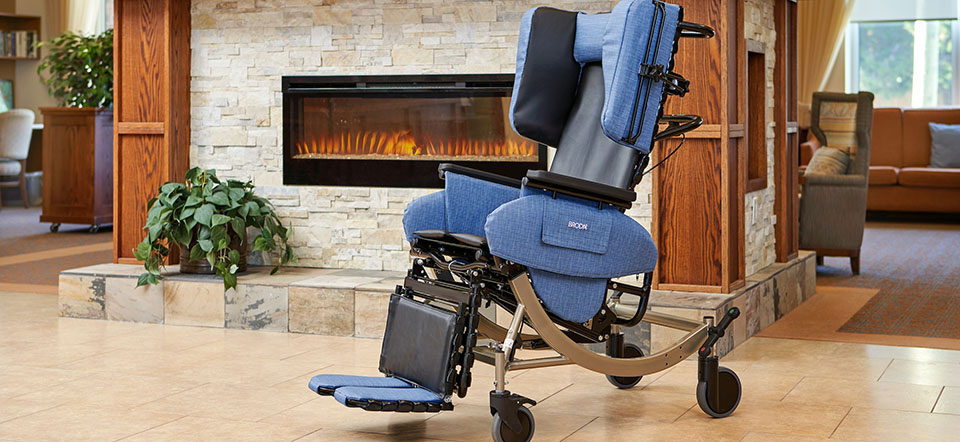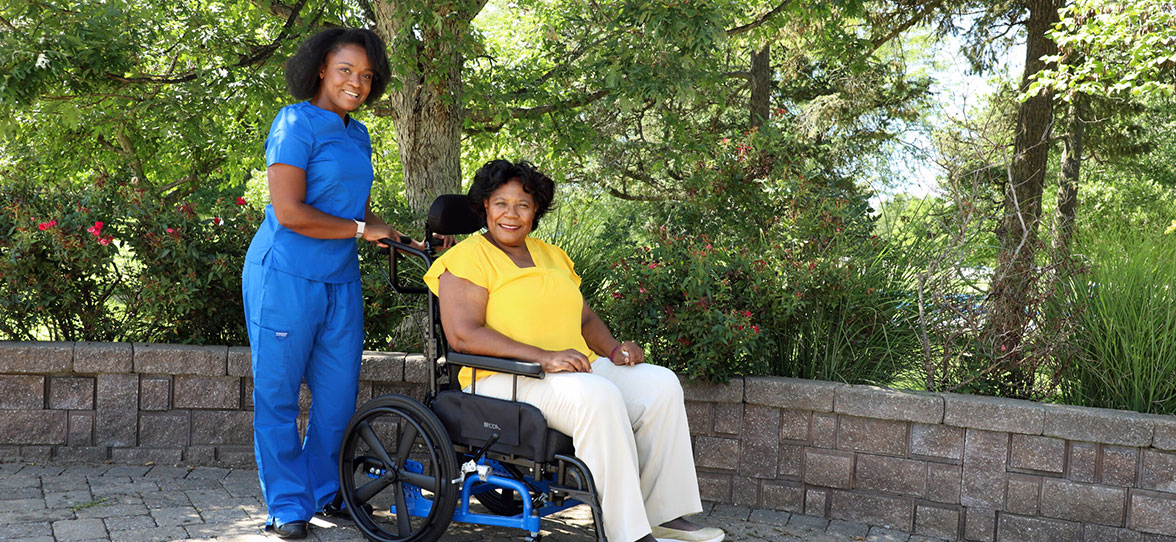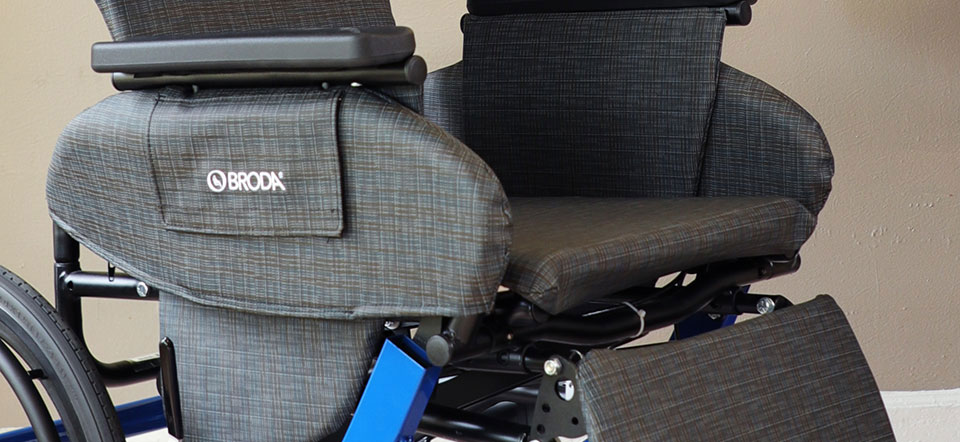Maintaining mobility and a high quality of life for those in long-term care is the most crucial benefit of modern durable medical equipment (DME). How to properly select, prescribe, repair, and configure equipment for each user and environment is a difficult ever evolving endeavor. The knowledge of where to procure and navigate the pay source for the equipment is hard to come by, but critically important. Whether at home or within a facility, this equipment is vital to patient comfort, treatment, care, and recovery.
Recently, after obtaining our Synthesis Positioning Wheelchair for a dependent long-term care resident, the Director of Nursing at a skilled nursing facility sent a message highlighting the difference our DME product brought to this person. The director said that since changing to Broda’s seating solution, the man’s outcome has changed and he “has been feeding himself, he smiles and laughs like he used to, and he is showing no signs of pain.”
However, the equipment can only be beneficial if it’s of a high enough quality and has enough functionality to offer the right support that users need. Otherwise, the inferior quality or limited features of the equipment could make life harder and less comfortable for users and their care teams.
How the Right Medical Equipment Can Alleviate Symptoms
Maintaining mobility and the ability to perform activities of daily living (ADLs) is the primary goal of DME in long-term care. Many residents spend most of the day or all day sitting in chairs or being maneuvered by lifts. In the worst cases, some residents are confined to their beds isolating them from others and social activities. Mobility equipment is essential for their participation in ADLs. The right wheelchairs, shower commode chairs, and lifts approach care and symptom relief in vastly different ways, however.
The seating system itself and the wheelchair’s overall functionality must allow for easy position changes to relieve pressure and maintain skin tissue integrity throughout the day. For users who cannot shift their weight independently, the seating surface needs to also allow for micro-movements and repositioning of the pelvis to relieve pressure in critical areas. This positioning with reclining and tilting helps users avoid pressure injuries, poor posture or even sliding out of the chair.
Proper support and versatile recline and tilt also facilitates the practical use of upper extremities. Being in a more action-ready position means users can sit upright, feed themselves, and perform ADLs with a lower risk of pain, falling, or injuring themselves.
In addition to direct physical support, however, highly functional mobility equipment is necessary for proper organ function. For example, posterior tilt supports the human body to promote optimal aspiration, oxygenation, and blood flow. This positioning has a domino effect, improving digestion and other physiological and behavioral processes along the way.
Sizing Up Care Facilities & Services for Access to Quality Mobility Equipment
Because many people in long-term care rely on wheelchairs, lifts, and other DME, the quality of a facility’s or homecare service’s equipment should be one of the more important things to assess when considering care providers for a loved one. You might not be an expert on medical equipment, but you thankfully do not need to be. The US Agency for Healthcare Research and Quality has developed several quality indicators that help measure the performance of healthcare services.
Here are five factors to keep in mind as you weigh care providers for those who need mobility equipment:
1. Patient financial funding and reimbursement programs
For long-term care, the most important indicators include participating in funding programs, such as Medicare and Medicaid or local state and provincial agencies. These programs will at least partially cover some of the costs as long as the provider and patients are eligible and quality for each type of equipment. More information on how to get funding can be found in Broda’s Funding Resource Guide or contact our team who can walk you through your specific situation.
2. Facility staff-to-patient ratio
You’ll want to compare the total number of residents to the total number of licensed nurses, home health aides, certified assistants, therapists, clinicians, and certified physicians. The social service staff can also indicate how well the care provider integrates a holistic care approach into its services.
3. Track record of safety and limited injuries
With a reliable staff of healthcare experts, patient safety hopefully should be less of a concern. Check into the provider’s history of incidents such as pressure injuries or falls over the past couple of years. A combination of patient-centered care, skilled assistance, and access to high-quality equipment typically translates to lower-than-average instances. US Nursing Home Compare, US State Guide to Assisted Living Records and Reports, or other state and provincial long-term care agencies should have publicly available information.
4. Team effectiveness and efficiency
Along with skills and expertise, observe how well the facility’s team members work together and communicate. Everyone should be on the same page to deliver consistent support throughout your loved one’s care. Ensure team members provide the same (or similar) answers to questions, agree on daily amounts of medications, and work together to assist patients during ADLs.
5. Attention to patients’ needs
Before deciding on your loved ones’ long-term care provider, speak with current residents to determine how they feel about their care. Ask whether they feel like they’re treated with respect, how they would rate their DME, and whether the staff is gentle when helping with ADLs. If the provider refuses to allow you to speak with residents, consider that a red flag and continue your search.
After implementing and using higher quality and functional equipment the significant benefits and improvements in patient care are undeniable. To provide your loved one with the best hospice care and support, make sure the facility you choose offers superior equipment and support for its patients.
If you have questions Broda is here to help! For the past four decades Broda has been providing thousands of families with reliable and functional mobility equipment all over the world contact our team and we will help you find the right solution.



